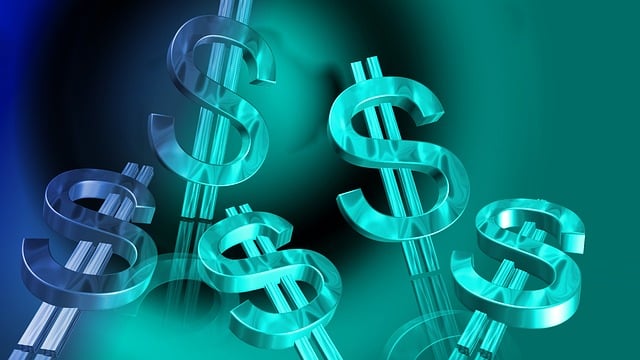As we step into April 2025, the forex market is buzzing with one undeniable trend: the U.S. dollar’s rollercoaster performance, driven by the incoming Trump administration’s bold policy proposals. With Donald Trump set to take office as the 47th U.S. president on January 20, 2025, traders worldwide are fixated on how his economic agenda—featuring aggressive tariffs, tax cuts, and a focus on American exceptionalism—is reshaping currency markets. This article dives into the most trending topic in forex right now: the U.S. dollar’s strength and the ripple effects felt across major currency pairs.
Trump’s Policy Playbook: A Dollar Booster?
Even before his inauguration, Trump’s proposed policies have sent shockwaves through the financial world. A key pillar of his plan is a deep cut in the corporate tax rate, slashing it from 21% to 15%. This move is expected to juice up the U.S. economy by encouraging investment and boosting demand. At the same time, Trump has floated hefty tariffs—up to 60% on Chinese imports and 10-20% on goods from other nations. These protectionist measures could reignite inflation, keeping U.S. interest rates higher for longer and making the dollar a magnet for investors.
The forex market isn’t waiting for January to react. The U.S. dollar index, which tracks the greenback against a basket of major currencies, has already broken out above key resistance levels in late 2024, signaling a potential multi-month bullish run. Traders are betting big on a stronger dollar, with many eyeing the psychological 7.3650 resistance level against the Chinese yuan (USD/CNH) as the next battleground. If this level cracks, it could spell trouble for currencies tied to global trade, like the Australian dollar (AUD/USD), which has already tanked over 10% since its September 2024 peak.
The Fallout: Winners and Losers in the Forex Arena
The dollar’s surge isn’t happening in a vacuum—it’s shaking up major currency pairs and forcing traders to rethink their strategies. Here’s a snapshot of the action:
- EUR/USD: The euro has been on a wild ride, dropping sharply in early 2025 as Trump’s tariff threats stoked uncertainty in Europe. With the European Central Bank (ECB) expected to ease rates into mid-2025 amid sluggish growth, the euro is struggling to hold above 1.0780. A decisive break lower could set the stage for a bearish run, especially if U.S. yields keep climbing.
- USD/JPY: The yen, a traditional safe-haven currency, has weakened as traders scale back expectations of a Bank of Japan (BOJ) rate hike. Despite Tokyo’s core CPI ticking up to 2.4% recently, the yen’s fate hinges on U.S. data—like the upcoming Personal Consumption Expenditures (PCE) report. A stronger-than-expected PCE could push USD/JPY past its 200-day moving average, currently hovering near 152.
- AUD/USD: The Aussie dollar is feeling the heat from a potential U.S.-China trade war 2.0. After a brutal 10.7% drop from its September 2024 high of 0.6943 to an intraday low of 0.6200 in December, the pair is teetering on the edge of a major bearish breakdown. China’s economic stimulus might offer some relief, but traders are watching U.S. tariff announcements closely.
- Gold (XAU/USD): Typically a hedge against dollar strength, gold has defied expectations by soaring to record highs above $3,080 per ounce. Safe-haven demand is fueling this rally, as investors brace for trade tensions and geopolitical uncertainty. The interplay between a strong dollar and rising gold prices is a hot topic among forex traders.
What’s Driving the Buzz?
The forex community is abuzz with speculation, and it’s not just about the numbers. Social media platforms are lighting up with traders debating the dollar’s trajectory. Some see Trump’s policies as a golden opportunity for USD longs, while others warn of a “negative feedback loop” if trade wars spiral out of control. The upcoming April 2nd tariff announcement—dubbed “Liberation Day” by some—has markets on edge, with volatility expected to spike as details emerge.
Economic data is also in the spotlight. The U.S. economy’s resilience—think steady job growth and robust consumer demand—has bolstered the dollar’s safe-haven appeal, even as inflation fears loom. Meanwhile, the Federal Reserve’s next moves are a wild card. After a 50-basis-point rate cut in September 2024, markets are pricing in three 25-basis-point cuts for 2025. But if Trump’s policies stoke inflation, the Fed might pivot, keeping rates elevated and supercharging the dollar further.
Trading the Trend: What’s Next?
For forex traders, the U.S. dollar’s dominance is the story of the moment. Here are some key takeaways to navigate this trend:
- Watch the Data: U.S. economic releases—like GDP figures, jobless claims, and the PCE report—will be make-or-break moments for the dollar. Stay sharp and ready to pivot.
- Tariff Timing: The April 2nd announcement could trigger sharp moves across pairs like USD/CNH and AUD/USD. Position sizing and risk management will be critical.
- Diverging Central Banks: While the Fed might hold steady, the ECB and BOJ could ease further, widening yield gaps and supporting USD strength.
- Gold as a Barometer: Keep an eye on gold prices. A pullback might signal fading uncertainty, while new highs could hint at bigger market jitters.
As of today, April 1, 2025, the forex market is a pressure cooker of opportunity and risk. The U.S. dollar’s fate under Trump’s policies is the hottest topic in trading circles, and it’s showing no signs of cooling off. Whether you’re a bull or a bear, one thing’s clear: the next few months will be a wild ride for forex traders. Stay informed, stay nimble, and let the trend be your friend—until it isn’t.





